Windstar’s Emirates, Qatar & the Span of Oman cruise is a journey mixing modern marvels and Middle Eastern heritage, and it’s the perfect way to experience the wonders of the Arabian Peninsula. Whether it’s the sparkling skylines of Doha and Dubai or the bejeweled interior of the Sheikh Zayed Grand Mosque, this trip will appeal to architecture buffs and Islamic art enthusiasts. Of course, between the spectacular fjords on Oman’s Musandam Peninsula and the souqs (markets) at nearly every port, there are endless ways to immerse yourself in Middle Eastern landscapes and culture.
These are the highlights:
Muscat, Oman
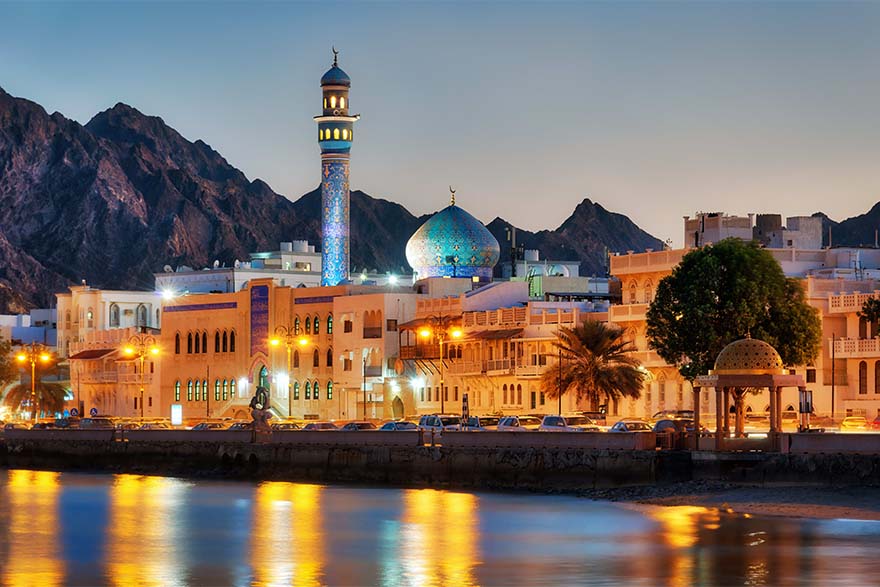
Muscat is situated between the Gulf of Oman and the Al Hajar Mountains, and beyond stunning scenery, the port capital is rich with culture. Not only is the Sultan Qaboos Grand Mosque the largest in the country, but inside is the second largest single-piece Persian carpet in the world. Built in the 1990s, this mosque is a beautiful representation of contemporary Islamic architecture, and the impressive central dome rises 160 feet above the floor. The Mutrah Souq (souq means market) is another top attraction — and one of the oldest marketplaces in the region. From jewelry to sweets, there are plenty of options for souvenir shoppers, and the nearby fish market is another popular spot. Walk along the Mutrah Corniche, a waterfront promenade, and head to the towering Mutrah Fort, which was built by the Portuguese in the 16th century.
Fujairah, United Arab Emirates
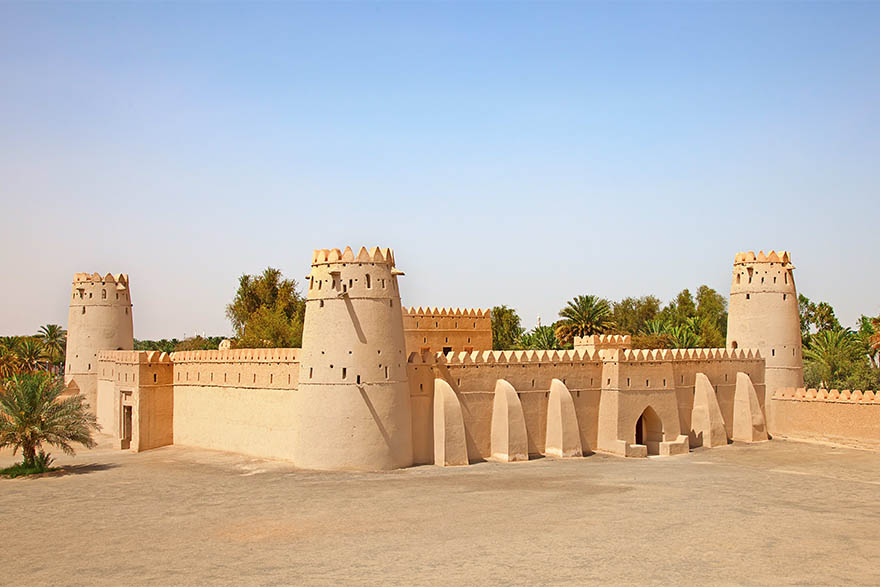
As the only Emirati capital next to the Gulf of Oman, life in Fujairah City moves at a more mellow pace than the bustling metropolises along the Persian Gulf. Fujairah is known for its mix of modern and centuries-old architecture, plus its uncrowded beaches and picturesque coastline. Sheikh Zayed Mosque, which was completed in 2014, is the main mosque in Fujairah, and the second largest in the UAE. Not to be confused with the larger Sheikh Zayed Grand Mosque in Abu Dhabi, Fujairah’s Sheikh Zayed Mosque is still very impressive, with 65 domes and six minarets. Fujairah is also home to the Al-Bidyah Mosque, estimated to have been built in the 15th century, making it the oldest known mosque in the country. The Fujairah Fort, which was built in the 16th century, is one of the oldest castles in the country, and the nearby Fujairah Museum has over 2,000 beautifully preserved artifacts and antiquities, including weapons, traditional costumes and ceramics.
Khasab, Oman
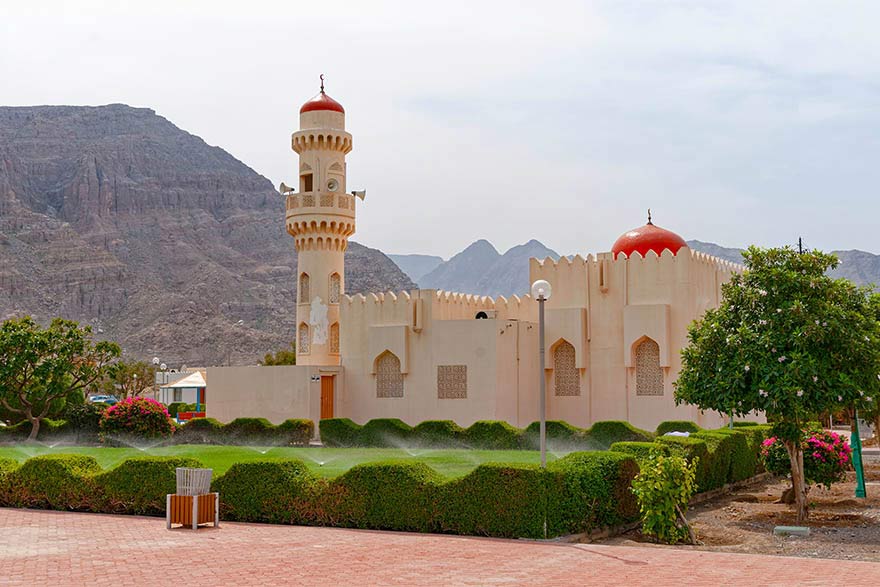
Located on the Musandam Peninsula on Oman’s northern coast, Khasab is famous for its spectacular fjords. Its nickname is the Norway of Arabia, and you’ll be blown away by the contrast between the teal water and the desert landscape. Cruise through the fjords on a traditional Omani dhow boat, and when the boat anchors near Telegraph Island, you’ll have the opportunity to swim in the calm, clear waters. If you’re seeking a mix of natural wonders and culture, consider a 4×4 tour to Jebel Harim, which, at 6,260 feet (about 1,900 meters), is the high point on the Musandam Peninsula. After spending time in the Bedouin village of Sayah, you’ll stop just below the summit of Jebel Harim and marvel at a bird’s eye view of the Gulf of Oman. Near the port, you’ll find Khasab Fort, which was built in the 17th century by the Portuguese. Check out the Bait Al Qufl on display in the courtyard, which is a traditional storage structure unique to the Musandam Peninsula. Translating to “house of locks,” the structure is set below ground level, with a lock system to keep the property safe when occupants moved to the shore to fish during the summer months.
Abu Dhabi, United Arab Emirates
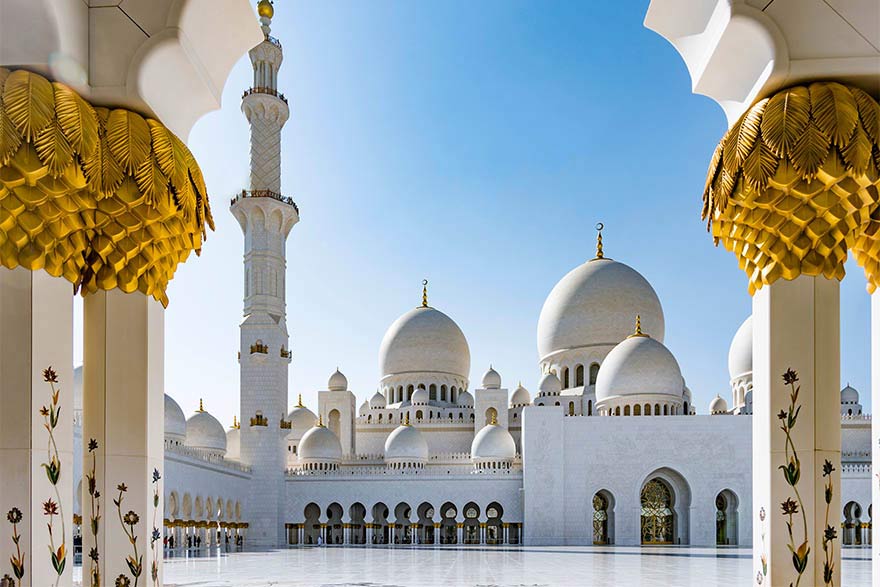
Abu Dhabi is the largest of the seven United Arab Emirates, and the city of Abu Dhabi is the capital of both the emirate and the nation. Though the skyline may sparkle with modern skyscrapers, the aqua waters and white –sand beaches surrounding the metropolis are equally impressive. The first stop on most Abu Dhabi itineraries is the Sheikh Zayed Grand Mosque, which is the largest in the UAE, and one of the most dazzling and iconic mosques in the Middle East. Featuring 82 marble domes, reflective pools, and extravagant details like 24-carat gold Swarovski crystal chandeliers and columns inlaid with gemstones, the mosque can hold up to 40,000 worshippers. Stroll along the five-mile Corniche, which sits next to waterfront real estate, beaches, gardens, art installations and playgrounds, or explore Eastern Mangrove National Park, which has scenic waterways and boardwalks perfect for kayaking and birdwatching. The Yas Mall, which is the largest in the country, is located on Yas Island. The artificial island is also home to the Yas Marina Circuit, which has hosted the Formula One Abu Dhabi Grand Prix since 2009.
Doha, Qatar
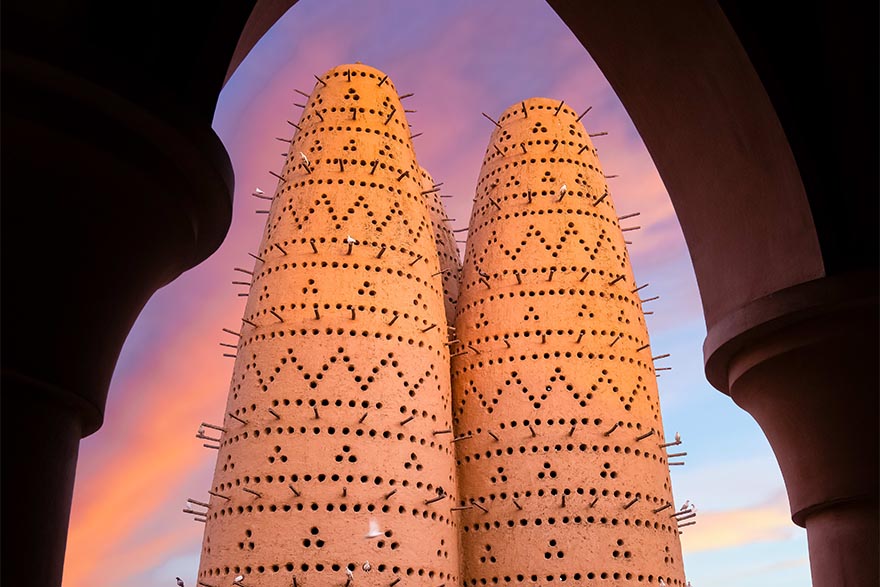
Doha has exploded in popularity in recent years, and from its infrastructure to a world-class arts scene, Qatar’s capital is quickly becoming one of the most prosperous cities in the Persian Gulf. The city’s skyscrapers glimmer next to the water, and from intricately decorated mosques to Michelin-starred restaurants, this is an urban paradise. The Doha Corniche is a four-mile waterfront promenade with access to cafes, parks and cultural attractions, and it is conveniently located next to the Museum of Islamic Art, considered the crown jewel of the country’s museums. The National Museum of Qatar is another gem, with information on everything from indigenous plants to the establishment of the Qatari state. The Souq Waqif has been a trading post for Bedouin nomads for centuries, and you’ll find spices, handicrafts, textiles and more at this market. On the northern end of the city, the Katara Cultural Village has several stunning mosques, a Greek-style amphitheater, art galleries, shops and cafes.
Sir Bani Yas, United Arab Emirates
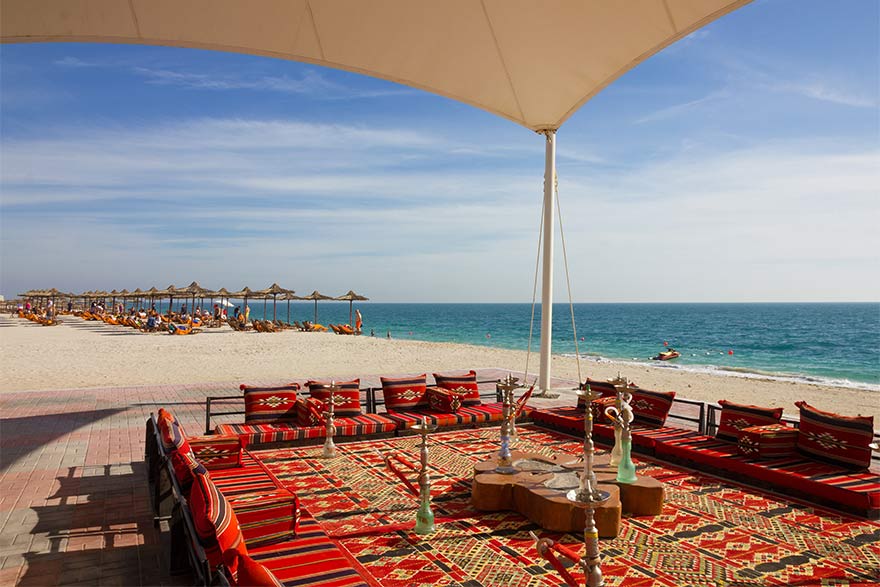
The former private island of the late UAE founder Sheikh Zayed bin Sultan Al Nahyan, Sir Bani Yas is the largest island off the coast of Abu Dhabi. Sir Bani Yas is perhaps most famous for its sprawling Arabian Wildlife Park, which is home to more than 17,000 free-roaming animals, including cheetahs, gazelles, oryx and giraffes. The island is also known for its numerous archaeological sites, including the ruins of the Church of the East monastery, which was discovered in 1992. Dating to the 7th and 8th centuries BC, this site is significant in providing evidence of the presence of Christianity in the region in the pre-Islamic period. For something completely different, relax at Yas Beach, or to truly escape it all, kayak in the tranquil waters of the Jubail Mangrove.
Dubai, United Arab Emirates
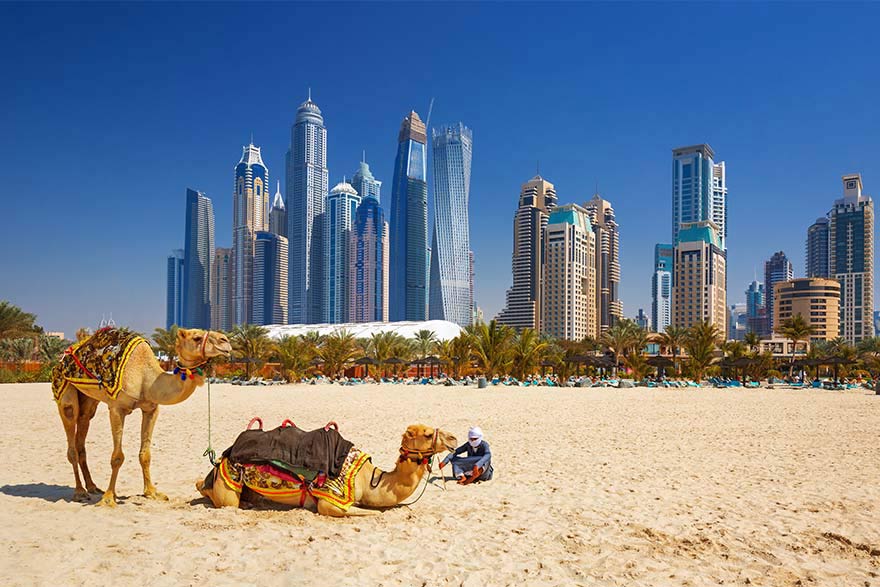
Dubai is the ultimate modern metropolis, and it is arguably home to the most impressive city skyline in the Middle East. Most first-time visitors go to the top of the 160-story Burj Khalifa, which is the tallest building in the world, and Dubai’s architecture is in a league of its own. Other popular landmarks include the Burj Al Arab hotel, a skyscraper that resembles a sail, and Palm Jumeirah Island, which is shaped like a palm tree. The Jumeirah Mosque is the only mosque in the city open to non-Muslim visitors, and the Dubai Mall is another major tourist attraction. The world’s largest mall sees nearly 100 million visitors a year, and with over 1,200 shops and an indoor ski hill, it’s worth a visit even if you’re not interested in shopping. The morning camel races at Al Marmoom bring in locals and visitors alike, and Dubai’s spice souq is one of the most popular traditional markets in the city.




















































